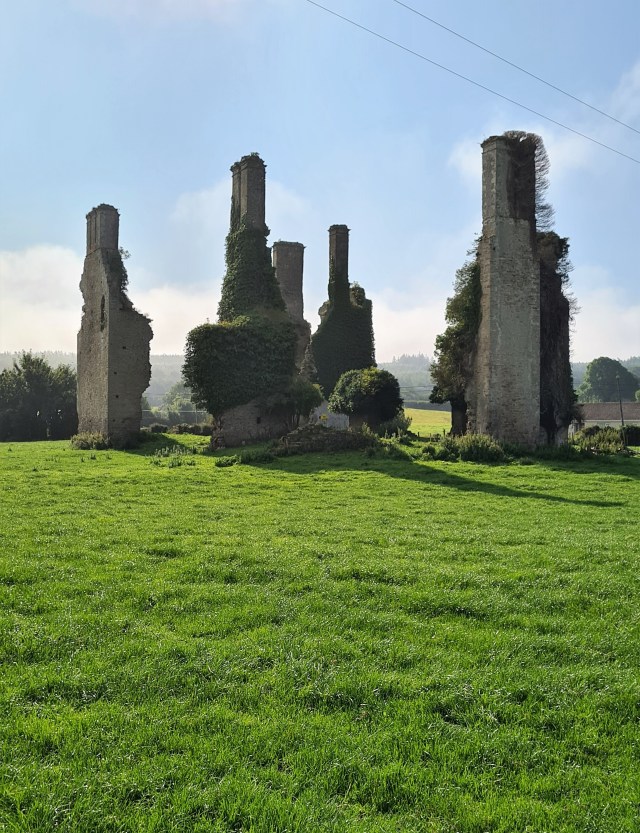
In the last quarter of the 16th century a number of members of the Cuffe family, all from Somerset, arrived in Ireland seeking opportunities to enrich themselves. Henry Cuffe, for example, came to this country as secretary to Robert Devereux, Earl of Essex when the latter was appointed Lord Lieutenant here in 1599. But when Essex fell from favour two years later and was executed, Cuffe suffered the same fate. Meanwhile, one of his relatives, perhaps a brother (it seems unclear) called Hugh Cuffe had also settled in Ireland where he was granted some of the Earl of Desmond’s lands in Munster, following the earl’s own death in 1583. Initially Hugh Cuffe seems to have been based in County Clare, but within a few years he was recorded as receiving land in County Cork, close to property which had been given to Edmund Spenser. However, before much longer had passed Cuffee had to surrender at least some of what he had been granted, after his right to it was challenged by members of an Old English family related to the FitzGeralds . Nevertheless, he must have held onto something because a marriage settlement drawn up in 1604 between his daughter Dorothea, and Charles Coote, describes Hugh Cuffe as being ‘of Cuffe’s Wood (or Kilmore), County Cork.’




Like Hugh Cuffe, Charles Coote was an English settler, arriving here in 1600 as captain of a foot regiment in the army of Charles Blount, Lord Mountjoy who had succeeded the Earl of Essex as Lord Deputy of Ireland: Coote was therefore a member of the force that a year later defeated the Irish and Spanish forces at the Battle of Kinsale. He soon began to reap the benefits of being on the winning side. In 1605 he was appointed Provost Marshal of Connaught and then in 1613 was given the office of General Collector and Receiver of the King’s Composition Money for Connaught, also for life, before being further promoted to Vice-President of Connaught. As a result of holding these positions, his main base was in Roscommon where he built a residence, Castle Coote. He also founded the towns of Jamestown and Carrick-on-Shannon, both in County Leitrim, as well as Mountrath, County Laois. Knighted in 1616, five years later Coote was appointed a Privy Councilor by James I, who also made him the first Baronet of Ireland, ‘in consideration of his good and faithful services in the province of Ulster.’ All seemed to be going well for him until the outbreak of the Confederate Wars in 1641. Although by then aged 60, he was instructed by the English government to raise a regiment and suppress insurrection, which he did with considerable force in County Wicklow before moving north. In May 1642 he was shot dead while leading a cavalry charge against a Confederate army in Trim, County Meath.




As already mentioned, in 1604 Hugh Cuffe’s daughter Dorothea married Charles Coote. Although the couple spent much of their time in Connaught, Coote owned land in what is now Laois but was then called Queen’s County. Here at some unknown date, perhaps around 1621 when he became a baronet, perhaps later, he embarked on building a substantial new house, which in honour of his wife he named Castle Cuffe. Was the place ever finished and occupied? We shall probably never know because soon after the onset of the Confederate Wars it was threatened with attack by the O’Dunnes who had formerly owned the land on which the castle stood. A cunning strategy was adopted to capture the place: Captain Daniel Dunne placed a tree trunk, coloured to look like a large cannon, on a hill some distance from the building and threatened to fire on it unless the occupants surrendered, which they duly did – fleeing to the town of Birr some miles away. Meanwhile, Dunne’s troops, having taken everything they wanted from Castle Cuffe, set fire to the place. It appears to have remained a ruin ever since and only scant remains survive, although their height gives an idea of how impressive a house must once have stood here, constructed on a H-plan, rising three storeys high and with a facade 100 feet long. What mostly survive are a number of gable ends topped with high, squared chimneys, their striking appearance – as is so often the case in Ireland – a matter of indifference to the cattle which now call Castle Cuffe home.
